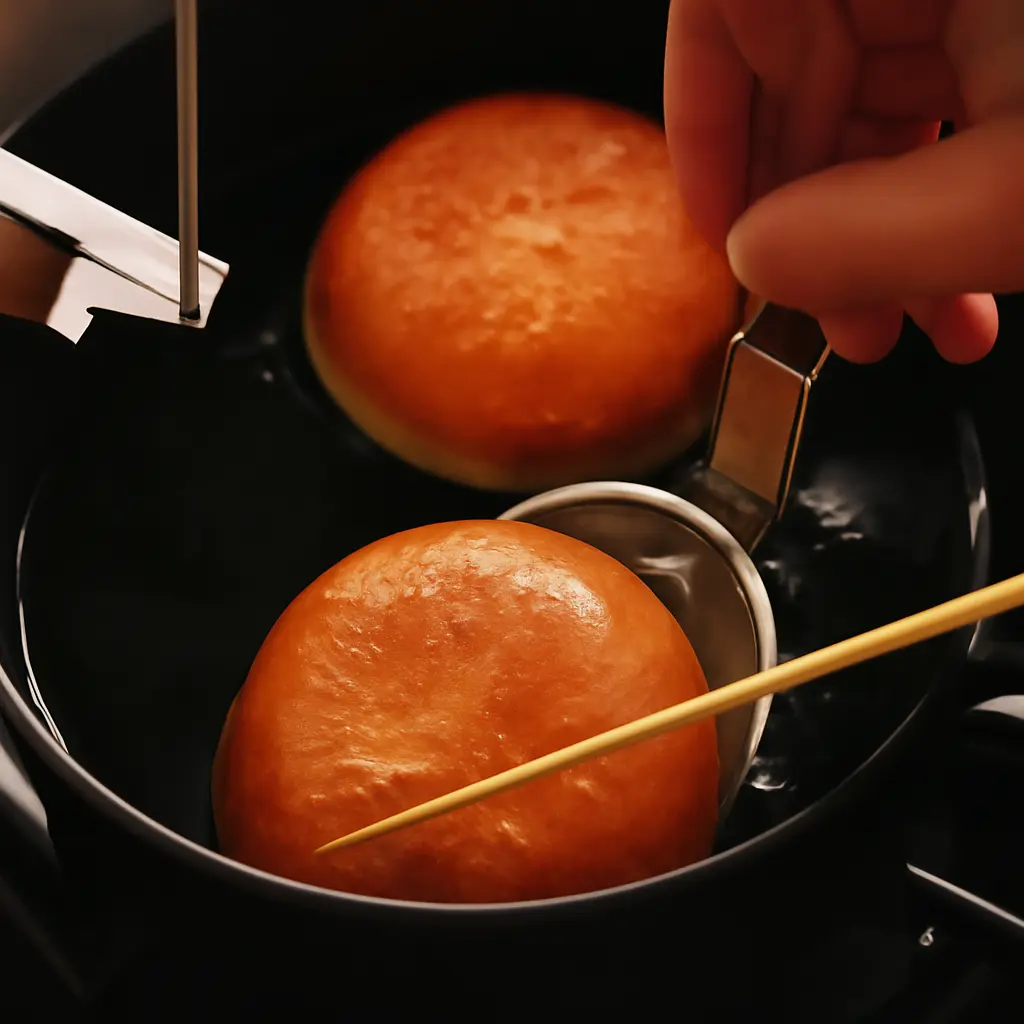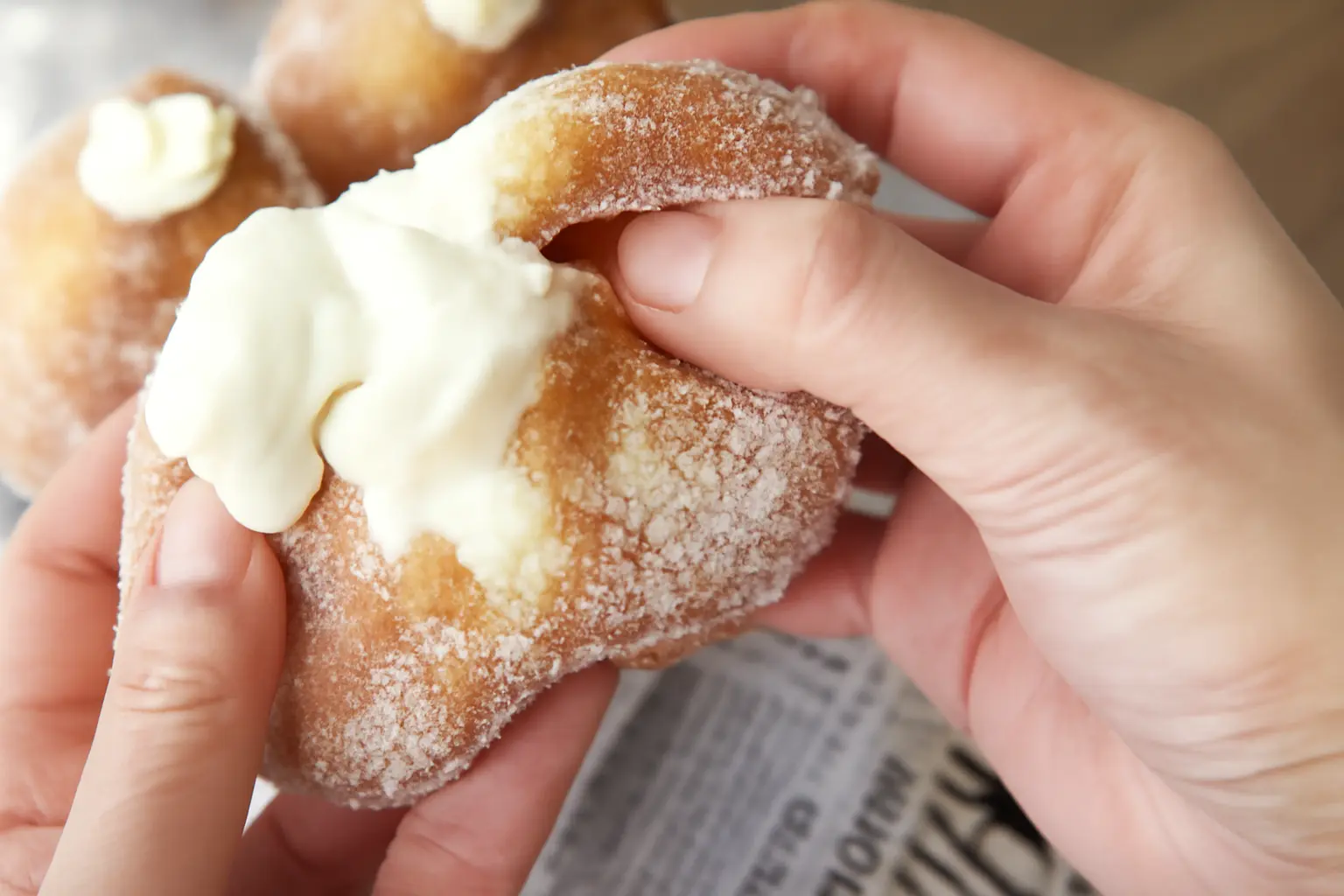💬 A Taste of Japan at Home: Why You’ll Love These Nama Donuts
Imagine biting into a warm, delicate donut that melts in your mouth with every soft, chewy bite. If you’ve ever visited Japan or dreamt of doing so, you’ve likely heard of the world-famous “I’m Donut?” bakery—a sensation that introduced a new level of fluffiness and flavor to donuts. Now, imagine making those dreamy nama donuts right in your kitchen. That’s exactly what you’re about to learn.
In this guide, you’ll walk through the step-by-step process of how to make nama donuts recipe with authentic Japanese flair. From understanding what makes these donuts unique to discovering the secret ingredient that elevates them beyond the ordinary, you’ll gain the confidence and knowledge to recreate this culinary masterpiece.
Table of Contents
What Are Nama Donuts?
If you’re wondering what exactly nama donuts are, you’re not alone. The term “nama” means “raw” or “fresh” in Japanese, but when it comes to donuts, it refers to their ultra-soft, tender texture and freshly made appeal.
Inspired by Japan’s trending “I’m Donut?” bakery, these treats are the epitome of fluffiness and cream-filled satisfaction. Unlike typical yeast donuts, nama donuts use a combination of yudane (a Japanese dough starter) and kabocha squash, which contribute to their melt-in-your-mouth texture.
These donuts are lightly fried to a deep golden brown, filled with rich, creamy fillings, and rolled in sugar or glazed to perfection. They’re unlike anything you’ve had before.
Ingredients You’ll Need for Authentic Nama Donuts
To achieve that signature softness and subtle sweetness, gather these ingredients before you begin.
📋 Yudane (Tangzhong-style Dough Starter)
| Ingredient | Quantity |
|---|---|
| Bread flour | 60 g |
| Boiling water | 60 ml |
🧳 Main Dough
| Ingredient | Quantity |
|---|---|
| Raw kabocha | 65 g (yields ~45 g cooked) |
| Warm milk | 90–100 ml |
| Egg (room temp) | 1 large |
| Granulated sugar | 38 g |
| Bread flour | 240 g |
| Instant dry yeast | 3 g (5 g for same-day method) |
| Salt | 6 g |
| Unsalted butter (softened) | 76 g |
🍩 Coating Options
- Powdered sugar
- Granulated sugar
- Simple glaze: powdered sugar + milk + vanilla extract
🍰 Filling Options
- Custard cream
- Diplomat cream (custard + whipped cream)
- Plain whipped cream (sweetened)
Step-by-Step Guide to Make Nama DonutsYou don’t need to be a pastry chef to nail this recipe. Just follow these clear steps, and you’ll be amazed by the results.
1. Make the Yudane
- In a bowl, combine 60g bread flour with 60ml boiling water.
- Mix quickly into a dough.
- Cover and let rest for 4 hours at room temperature or overnight in the fridge.
2. Prepare the Kabocha
- Peel and cut the raw kabocha into chunks.
- Microwave for 2–3 minutes until soft.
- Mash and measure 45g. Adjust the milk later if needed.
3. Mix the Main Dough
- In a large bowl, add warm milk, egg, sugar, kabocha, bread flour, yeast, salt.
- Add the prepared yudane.
- Mix and knead until it starts to come together.
- Incorporate softened butter gradually.
- Knead until smooth and stretchy (about 10–15 minutes).
4. First Proofing
- Option 1: Refrigerate the dough overnight.
- Option 2: Let rise in a warm place for 60–90 minutes until doubled.
- Cover dough to prevent drying out.
5. Shape the Donuts
- Bring dough to room temp if refrigerated.
- Lightly punch down and divide into 50g portions.
- Shape into tight, smooth balls.
- Place on parchment paper squares.
6. Second Rise
- Let the dough balls rise again in a warm place (30–45 minutes).
- They should look noticeably puffier but not over-proofed.
7. Deep Frying
- Heat oil to 210–220°C. Use a thermometer.
- Fry 2–4 donuts at a time for 60–70 seconds per side.
- Drain on a rack or paper towel.
8. Coating & Filling
- Roll warm donuts in sugar or dip in glaze.
- Use chopsticks to create a hole.
- Pipe in about 45g of your preferred filling.

Expert Tips for Perfect Nama Donuts
Use these professional tricks to make your donuts truly exceptional:
- Always use warm (not hot) milk to activate the yeast.
- Make sure the yudane is completely cool before adding.
- Adjust the milk based on your kabocha’s water content.
- Fry donuts in small batches to control oil temp.
- Let them cool completely before filling to avoid melting the cream.
Variations and Serving Suggestions
Once you master the basics, try putting your own twist on your nama donuts:
- Add matcha powder or cocoa to the dough for extra flavor.
- Fill with fruit compote or jam instead of cream.
- Make mini donuts for parties or kids’ snacks.
- Pair with hot matcha latte or freshly brewed coffee.
Common Mistakes to Avoid
Don’t let small errors ruin your efforts. Here’s what to watch out for:
- Cold ingredients will slow yeast activity.
- Overproofing will cause the donuts to deflate when fried.
- Skipping the yudane will affect texture.
- Inconsistent oil temp results in uneven browning.
You can read more about: Mint Chocolate Truffles Delicious Homemade – Keller Recipe
📆 FAQ – How to Make Nama Donuts Recipe
Q1: What is nama in nama donuts?
A nama donut is a soft, fluffy Japanese-style donut made with brioche dough, often using yudane and kabocha squash for extra moisture. It’s known for its melt-in-your-mouth texture and creamy fillings like custard or whipped cream.
Q2: Can you make nama donuts without yudane?
Yes, you can make nama donuts without yudane, but the texture will be slightly different. Yudane adds extra softness and moisture, giving the donuts a tender, fluffy bite. If you skip it, your donuts may still be delicious but not as melt-in-your-mouth. To compensate, you can increase hydration slightly or add mashed kabocha or potato for a softer crumb.
Q3: What’s the best filling for nama donuts?
The best filling for nama donuts is diplomat cream—a rich blend of custard and whipped cream that’s silky, airy, and luxurious. Other great options include:
- Classic custard cream – smooth and creamy with a vanilla kick.
- Whipped cream – light and simple, perfect for a delicate bite.
- Chocolate ganache – for a rich, indulgent twist.
Choose the one that matches your craving—each gives a different texture and flavor to elevate your nama donuts.
Q4: How long do nama donuts stay fresh?
Nama donuts are best enjoyed fresh on the same day they’re made. However, you can store them for:
- 1–2 days at room temperature (in an airtight container)
- Up to 3 days in the fridge if filled with cream (but texture may change)
For the best taste and softness, avoid refrigerating unfilled donuts, and always consume cream-filled ones within 48 hours.
🔹 Conclusion: Your Gateway to Bakery-Style Nama Donuts
You now know exactly how to make nama donuts recipe from scratch—just like the pros in Japan. From the fluff-enhancing yudane to the naturally sweet kabocha, every element in this recipe serves a purpose. With each bite, you’ll taste the care and precision that make these donuts unforgettable.
Ready to impress your friends or treat yourself to the ultimate homemade indulgence? Gather your ingredients and bring this Japanese dessert to life in your own kitchen.
If you loved this recipe, share it with a fellow foodie or tag your creation on Instagram using #NamaDonutsChallenge. Happy baking!

